An AI art series strategically created to test the possibilities of implementing artificial intelligence tools in graphic design.


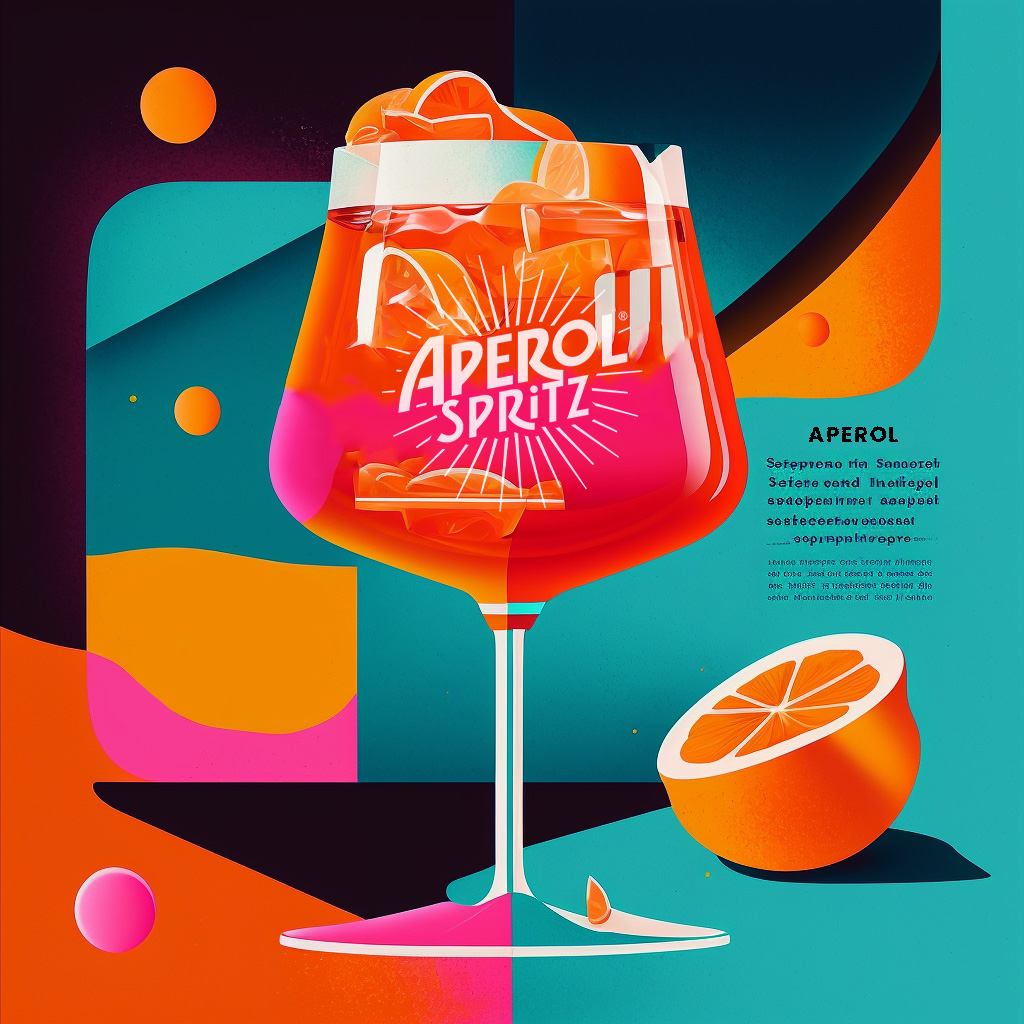
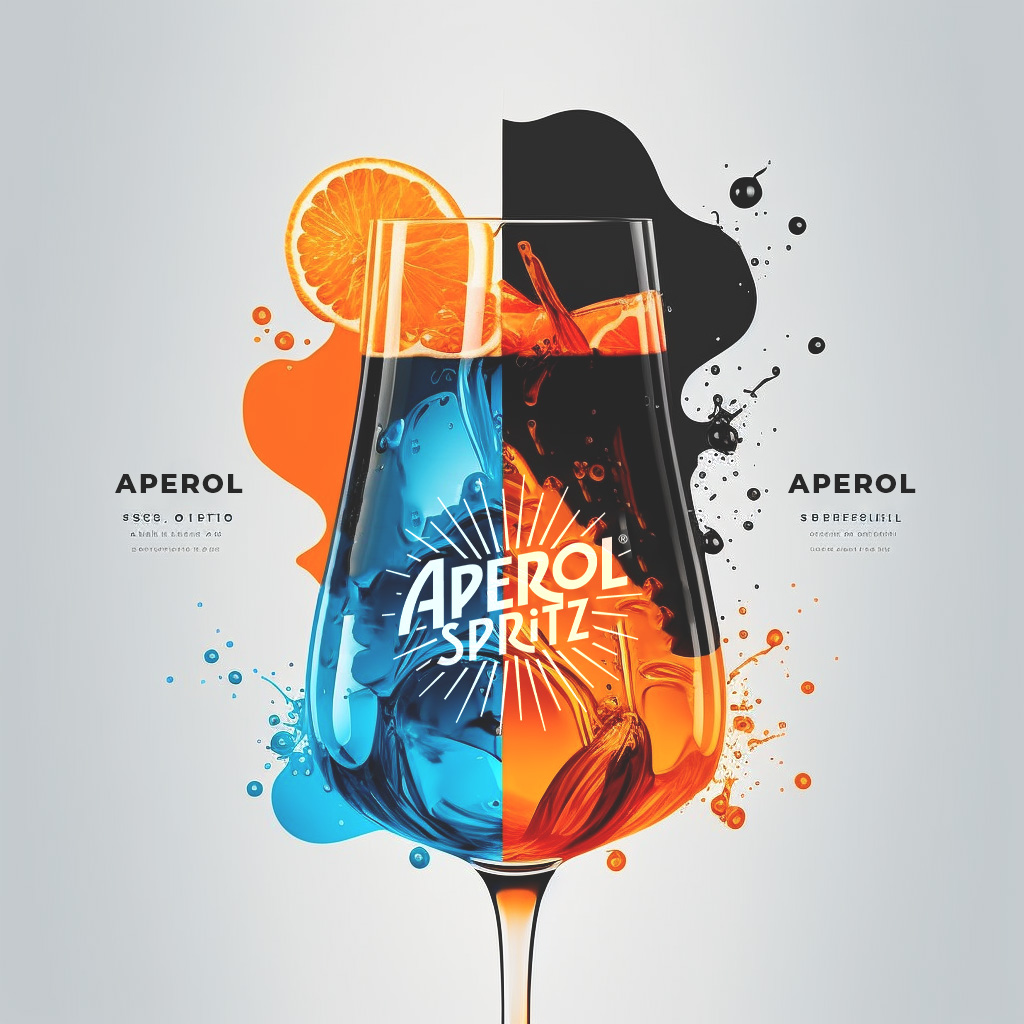
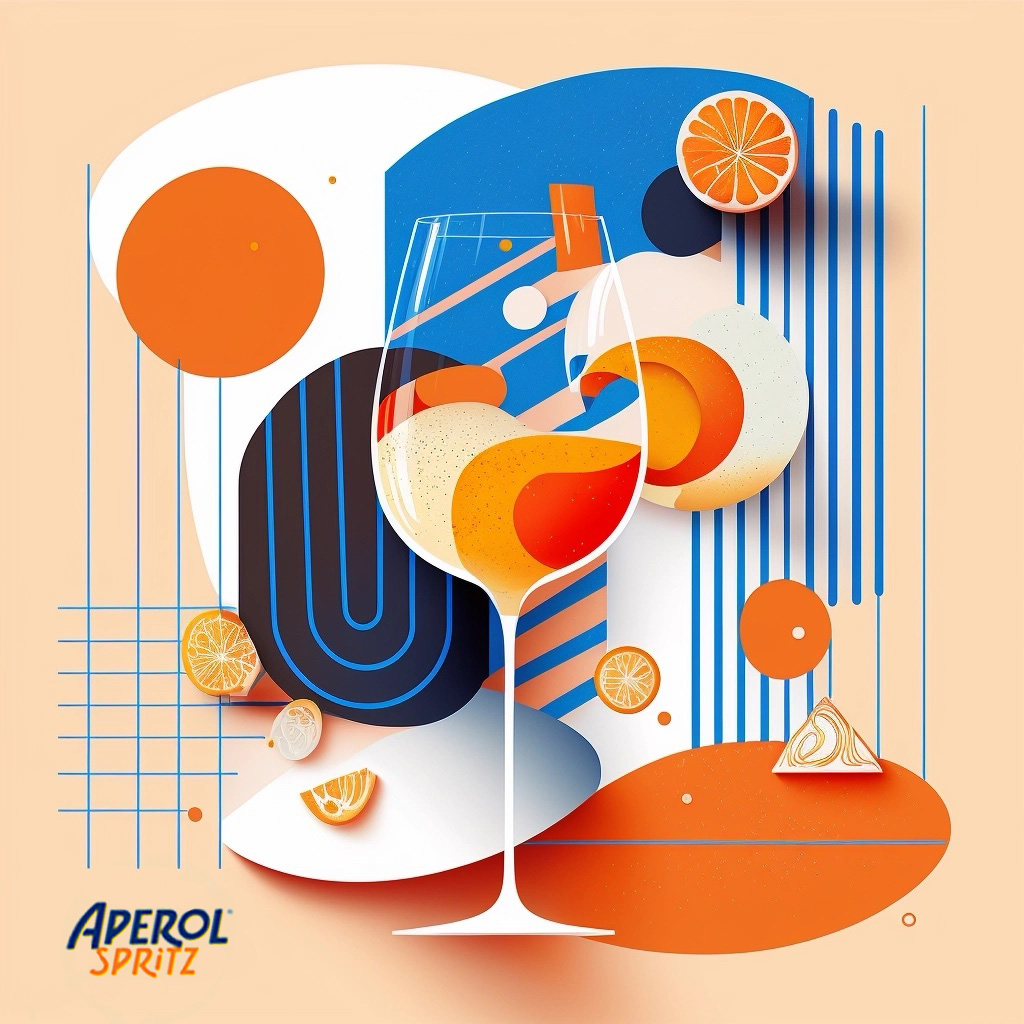
The integration of artificial intelligence (AI) in the creative industry has opened up a whole new world of possibilities for designers and artists alike. As a designer myself, I sought to explore the potential of AI art tools in graphic design through a unique project that pays homage to influential historical periods of design.
Inspired by a digital creator who redesigned 20 name-brand product ad variations following the trajectory of different historical periods of design, I saw an opportunity to challenge myself creatively while delving deeper into the history of the industry. With the release of open AI and AI art tools such as Midjourney, I decided to center my project around these new tools, with the aim of further developing my prompt engineering skills in the creative-specific realm.
To better showcase the differences between periods, I chose one main subject matter: the popular Italian aperitif, The Aperol Spritz. By selecting a subject matter with a consistent visual identity throughout its history, I could easily and efficiently compare the different stylings of various historical periods while maintaining the integrity of the subject matter, branding, and concepting.
Utilizing strategic prompt engineering methods, I created the initial art in Midjourney, taking the most high-quality version of that art into different Adobe tools such as Illustrator and Photoshop to fully complete the pieces.
Midjourney
Adobe Photoshop
Adobe Illustrator
I wanted a measurable way to test the accuracy and efficiency of the AI art tools throughout the project, so I developed specific key data points in order to do so.
1.
Prompt Variations
The number of prompt variations I used to generate each piece.
2.
Visual Consistency
A visual consistency percentage determined by the accuracy of the AI-generated image compared to the historical & modern representations and inspiration from each design period.
3.
Adobe Revisions
The number of revisions or design elements that were added in Adobe Illustrator and/or Adobe Photoshop.
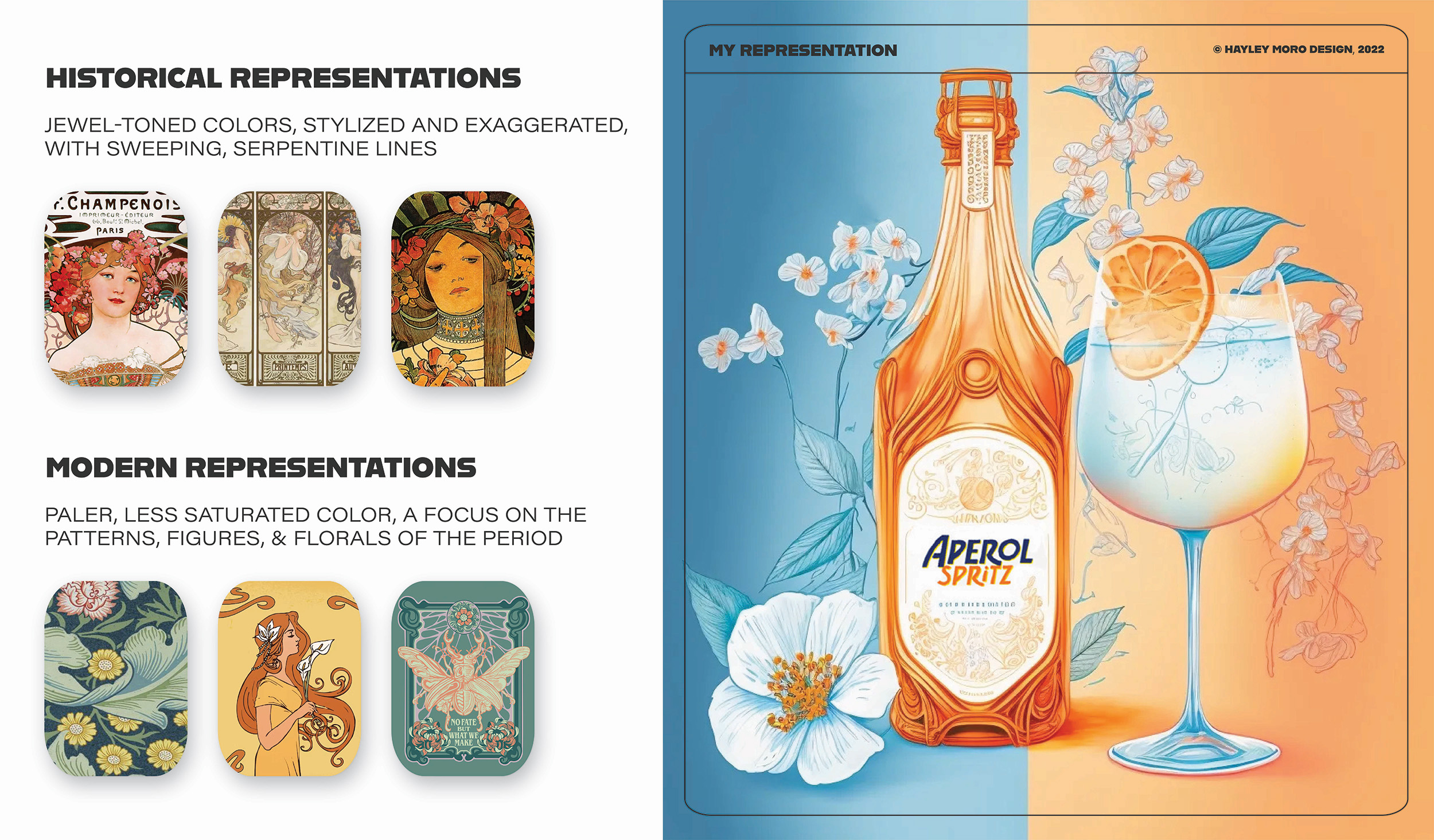
Prompt variations:
3
Visual consistency:
86.72%
Adobe revisions:
1
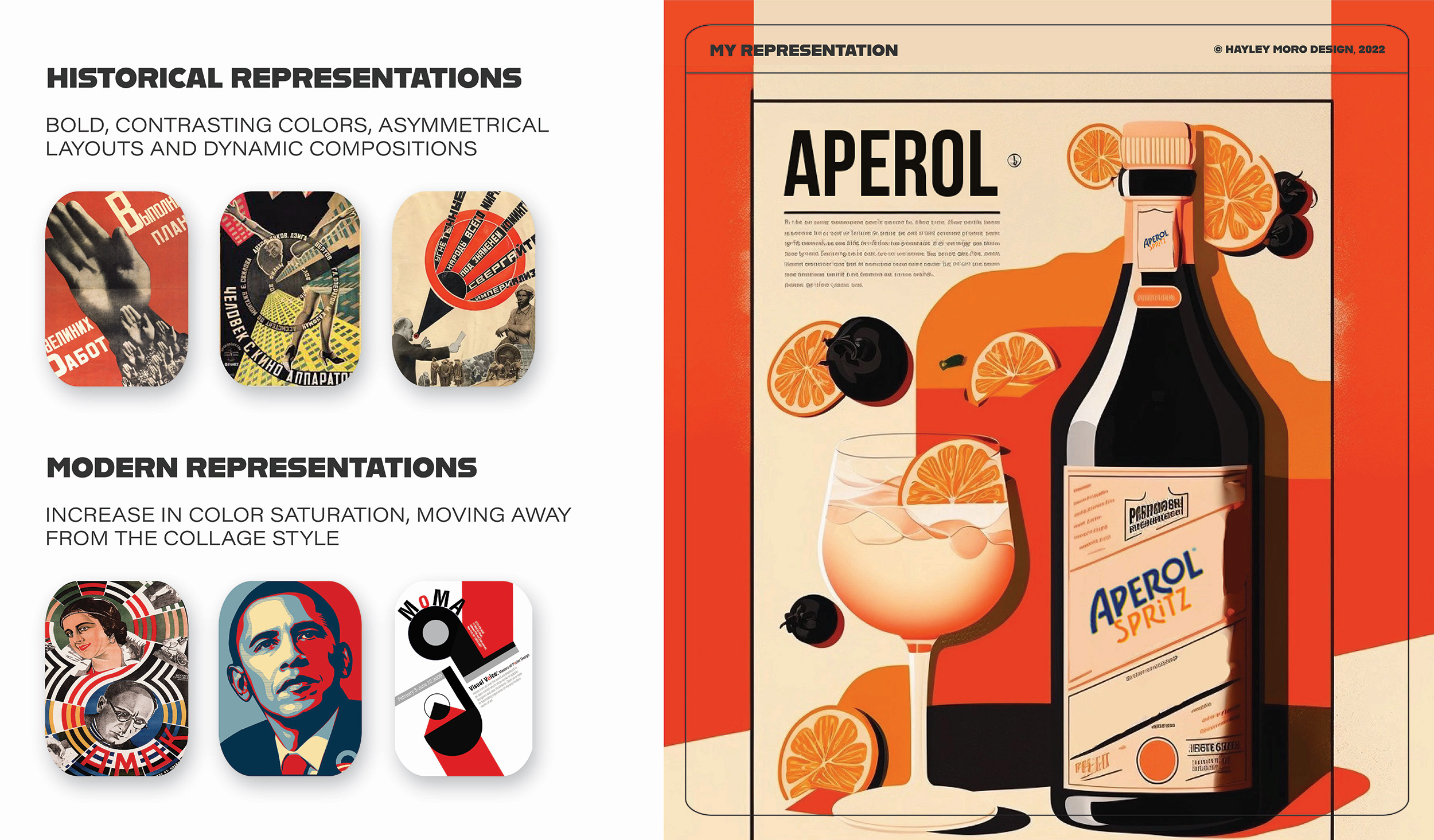
Constructivism is a style of graphic design that emerged in Russia in the early 20th century. The style is characterized by its use of geometric shapes, bold colors, and a focus on functionality and communication. Constructivism was not only limited to graphic design, but it was also applied to architecture, product design, and other mediums. Constructivist artists and designers believed that art should serve a practical and utilitarian purpose.
Prompt variations:
5
Visual consistency:
49.33%
Adobe revisions:
1
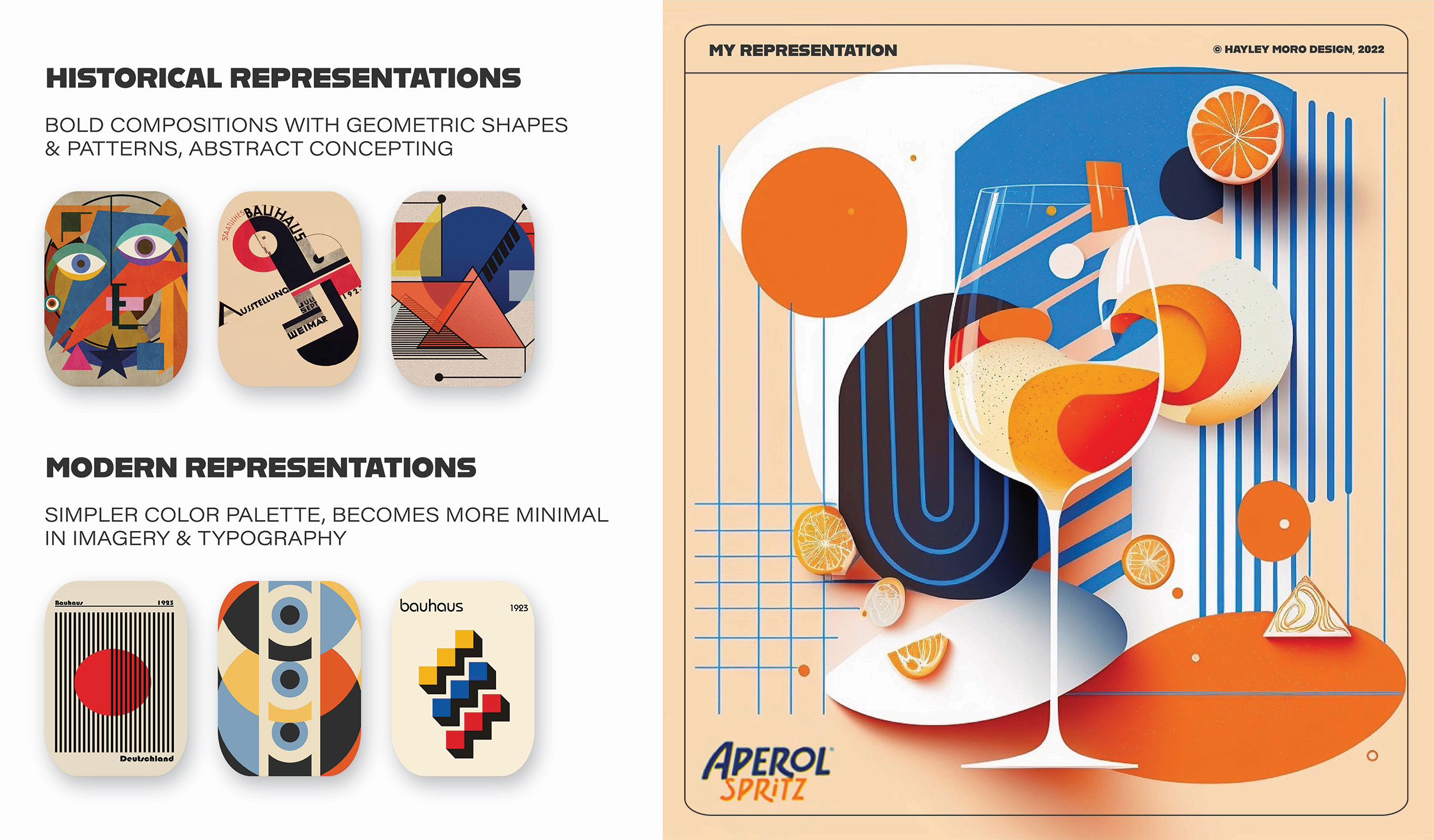
The Bauhaus was a German art and design school that existed from 1919 to 1933 and it had a strong impact on graphic design, architecture, and product design. The school’s philosophy was based on the idea that art and design should be functional, practical, and accessible to the masses. The Bauhaus approach, which aimed to integrate art, craft, and technology, had a lasting impact on design education and practice.
Prompt variations:
2
Visual consistency:
92.51%
Adobe revisions:
2

Art Deco is a style of design and architecture that emerged in the 1920s and continued into the 1930s, characterized by its bold geometric shapes, bright colors, and use of new materials and technologies. The style had a significant impact on graphic design, influencing the design of posters, packaging, typography, and other forms of visual communication. The style’s emphasis on luxury, glamour, and modernity made it popular during the 1920s and 1930s and it is considered to be one of the most iconic design movements of the 20th century.
Prompt variations:
3
Visual consistency:
89.51%
Adobe revisions:
12
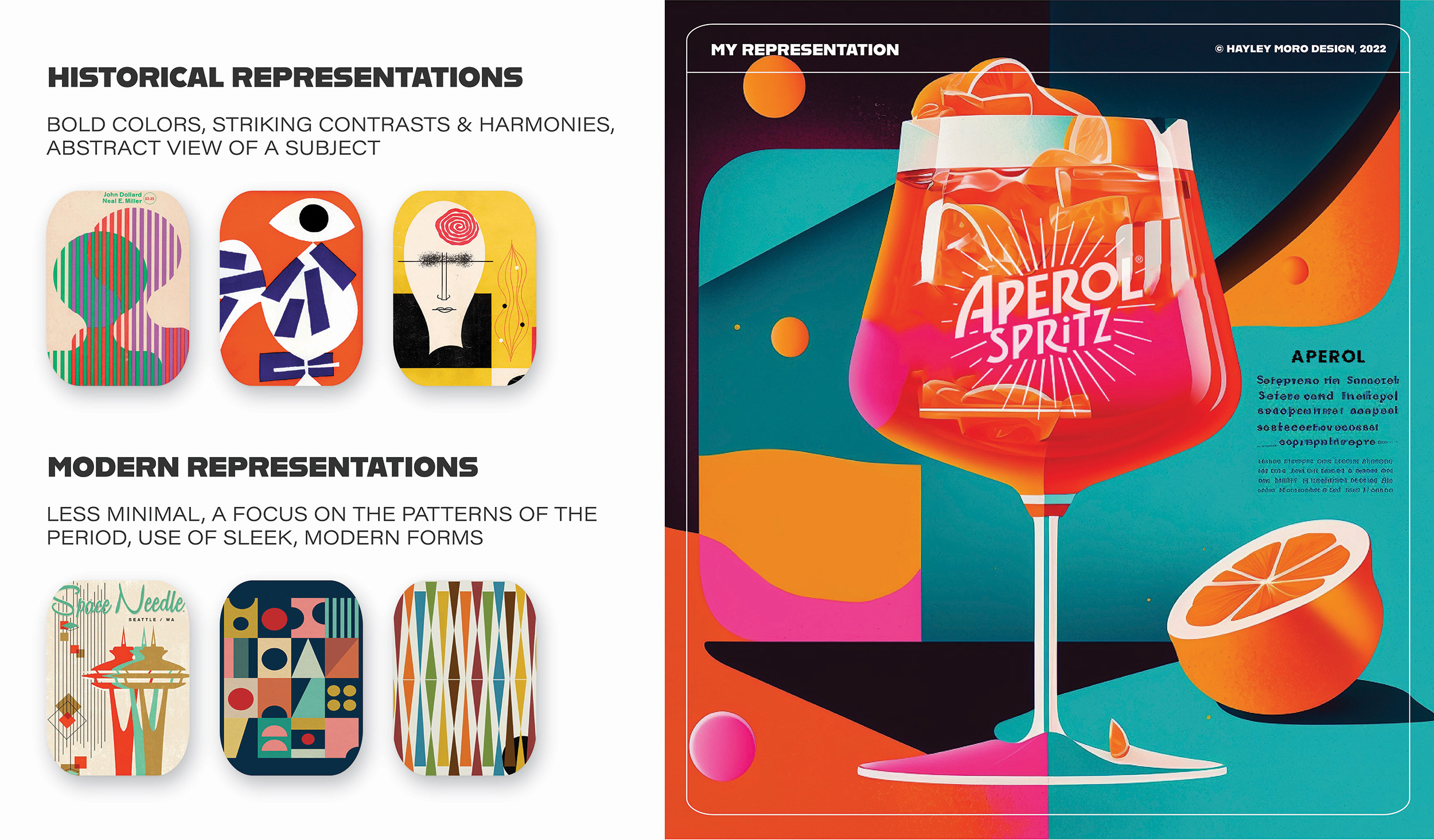
Mid-century modern is a design movement that emerged in the 1940s and 1950s, characterized by its clean lines, minimalism, and use of new materials and technologies. It had a significant impact on graphic design, architecture, product design, and other mediums. The style’s emphasis is on simplicity and functionality.
Prompt variations:
6
Visual consistency:
76.86%
Adobe revisions:
8
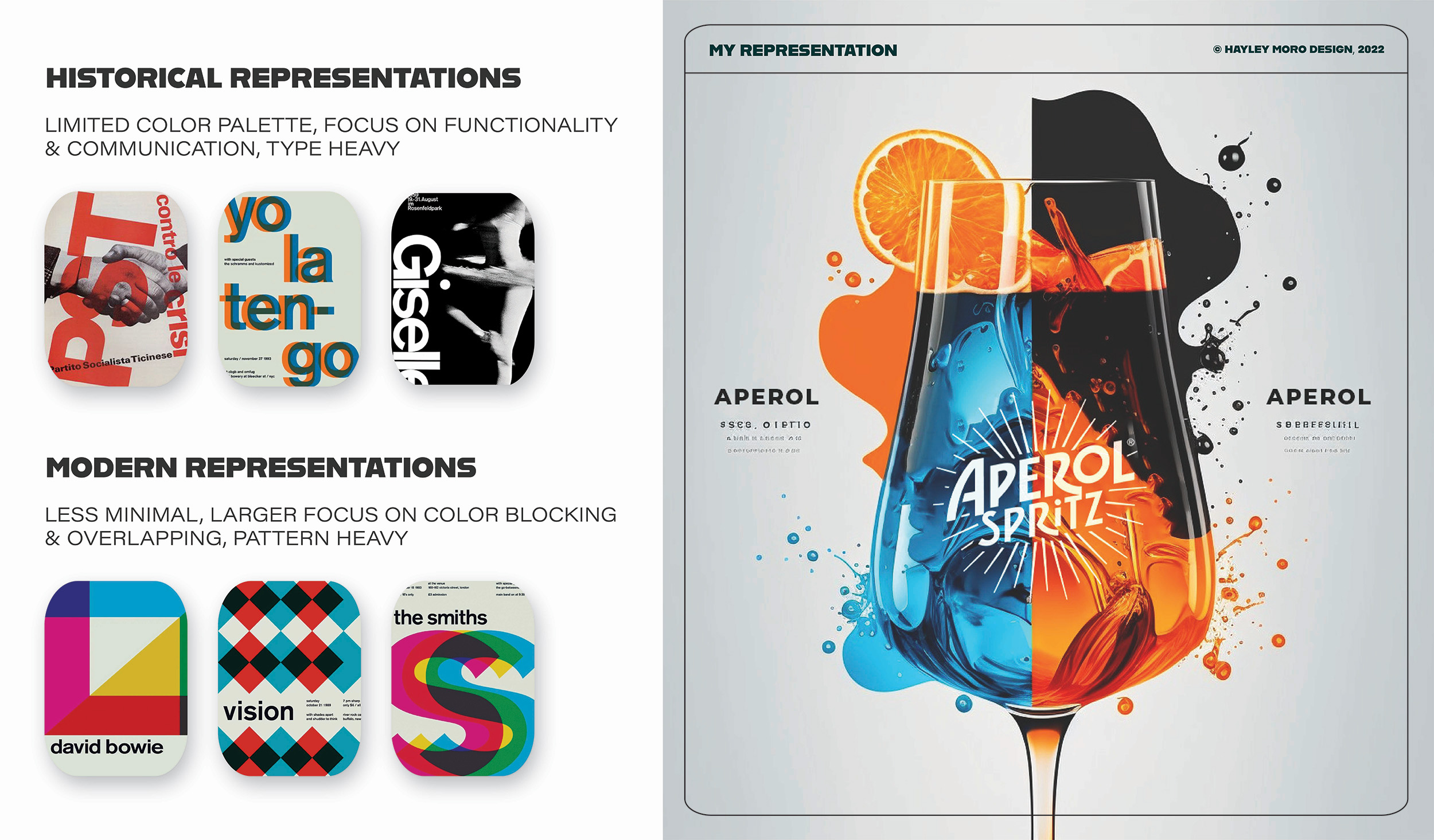
Swiss Style, also known as the International Typographic Style, is a design movement that emerged in Switzerland in the 1950s. The style is characterized by its use of clean, minimalistic design, typography, and grid-based layouts. Swiss Style had a significant influence on graphic design and it is considered to be one of the most important design movements of the 20th century. It was characterized by its objective, rational, and functional approach which is still prevalent in graphic design today.
Prompt variations:
11
Visual consistency:
39.98%
Adobe revisions:
16

Pop Art is a design and art movement that emerged in the 1950s and 1960s, characterized by its use of bold colors, graphic shapes, and everyday imagery. It had a significant impact on graphic design, painting, sculpture and illustration.
Prompt variations:
3
Visual consistency:
84.37%
Adobe revisions:
2
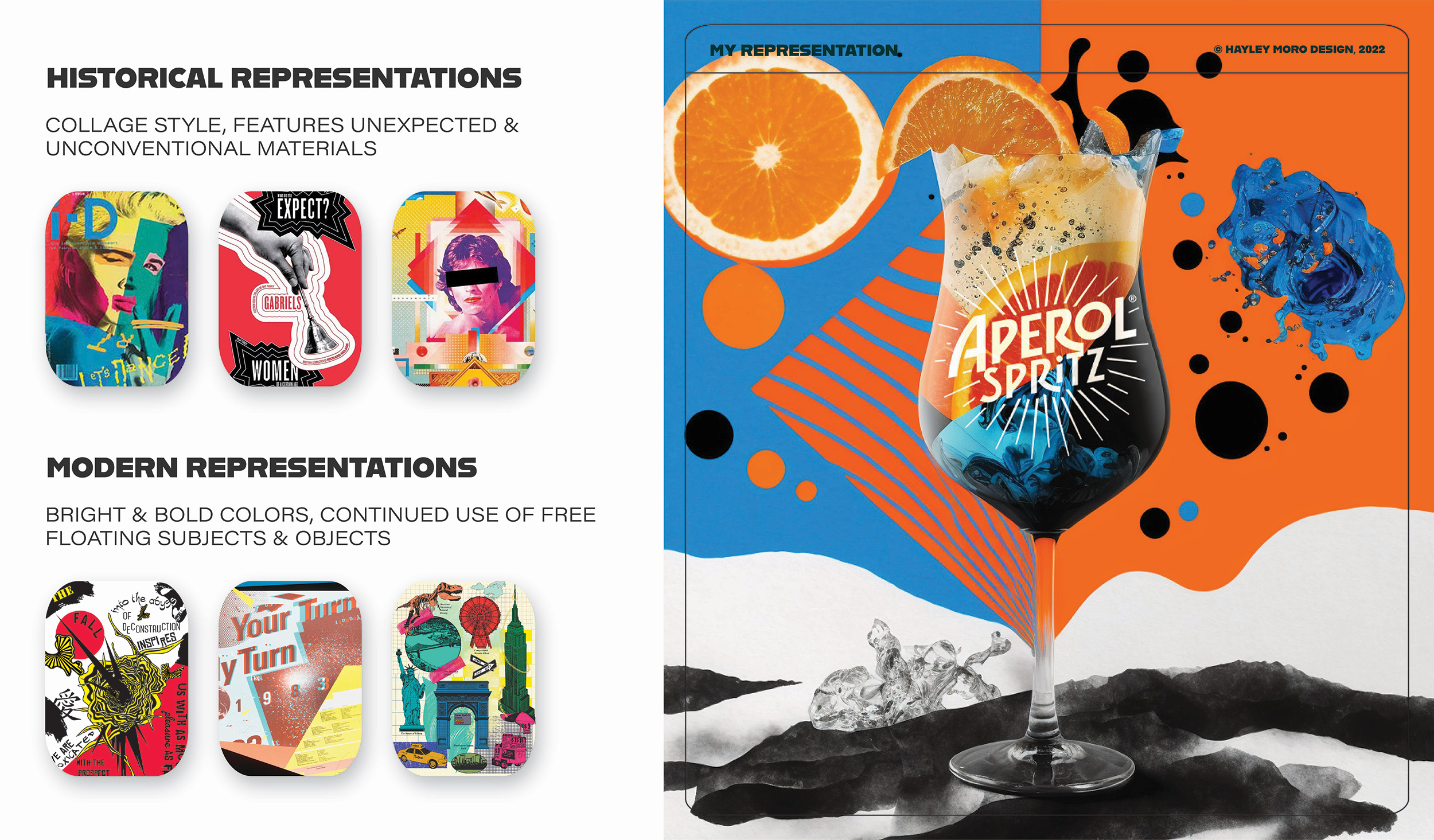
Postmodernism is a design and art movement that emerged in the late 20th century, characterized by its use of pastiche, irony, and a rejection of the modernist notions of originality, universality, and grand narratives. It had a significant impact on graphic design, influencing the design of posters, packaging, typography, and other forms of visual communication.
Prompt variations:
8
Visual consistency:
24.99%
Adobe revisions:
8
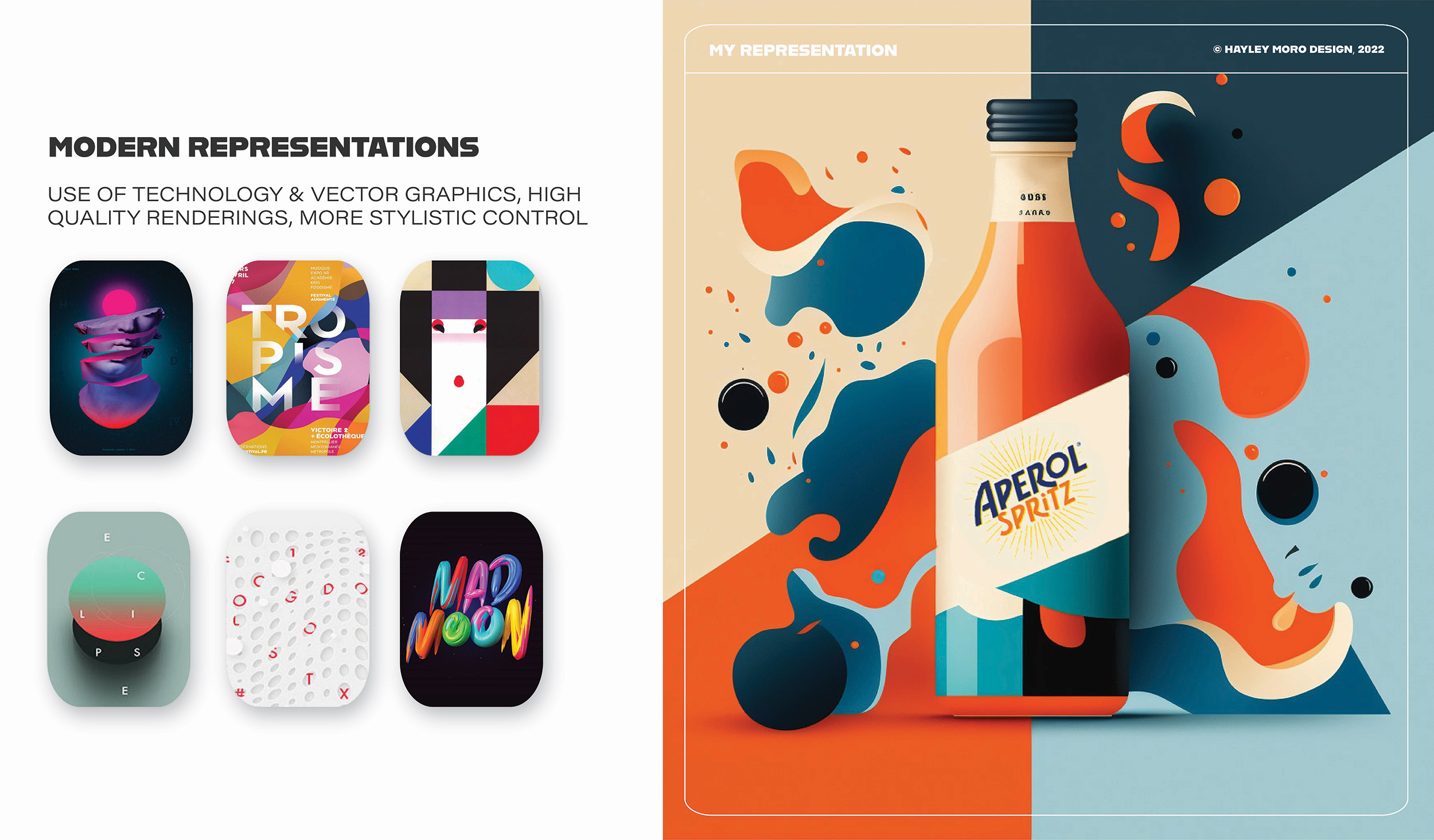
The Digital Age period of graphic design refers to the period of time starting from the late 20th century and ongoing, characterized by the widespread use of digital technologies in the creation and dissemination of visual communication.
Prompt variations:
4
Visual consistency:
41.18%
Adobe revisions:
1
One of my key findings in this challenge was that the AI tools were more efficient and effective for commonly known time periods of design, such as Art Deco and Pop Art. The AI algorithms were able to analyze and learn from a vast collection of existing artwork from these periods, resulting in highly accurate and visually stunning outputs. However, for lesser-known time periods of design, such as Swiss Style design, the AI tools were less accurate and required more fine-tuning in Adobe from the human designer to achieve the desired results.
I found that the use of AI tools allowed me to explore more creative possibilities in a shorter amount of time. By inputting a few key parameters into the AI algorithms, I was able to generate a wide range of unique and visually interesting designs that I may not have thought of on my own. This allowed me to quickly iterate and refine my designs, ultimately resulting in a more polished final product.
However, I also discovered that the use of AI tools requires a certain level of technical skill and prompt engineering knowledge. While AI can generate impressive results, it is up to the human designer to curate and refine the output to fit their specific creative vision. This requires a deep understanding of both design principles and algorithms, which can be a steep learning curve for some designers.
Overall, the use of AI tools in design has the potential to revolutionize the creative process by allowing designers to explore new possibilities and push their creative boundaries. However, it is important to approach AI as a tool to augment and enhance human creativity, rather than a replacement for human intuition and expertise.
Let’s designcreateideate together!
Don’t be shy, drop me a line! Let’s discuss how we can bring your design ideas to life. Whether you’re an established brand looking to implement design thinking methods or a start-up in need of a full brand development package, I’m here to help.
Let’s collaborate to create something extraordinary that truly reflects your brand’s personality and message. Let’s make some magic!
© Hayley Moro Design – 2023